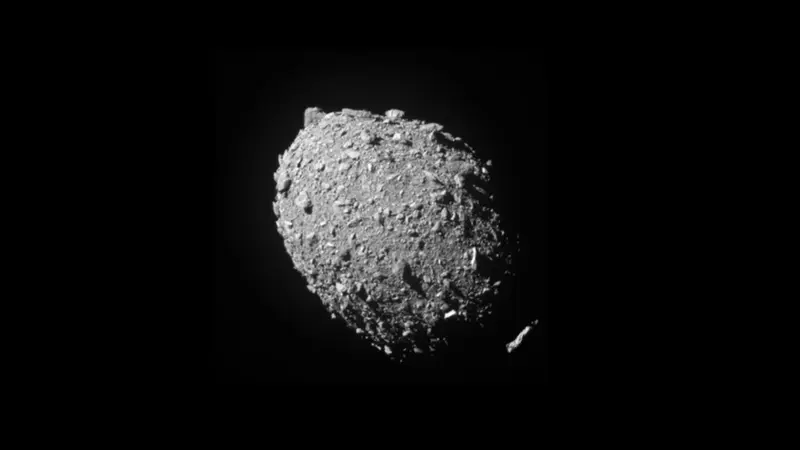On September 26, 2022, NASA’s DART spacecraft collided with the potentially hazardous asteroid Dimorphos to change its trajectory.
As confirmed by the website NASA The DART (Double Asteroids Redirect Test) mission became “the first in history dedicated to the study and demonstration of one method of asteroid deflection by altering its trajectory through a kinetic impact.” Thus, it is a fully effective strategy for protecting Earth from potentially hazardous asteroids (PHA).
By the way, Dimorphos is a small moon that orbits the larger asteroid Didymos.
Although two years ago, the National Aeronautics and Space Administration (NASA) confirmed the possibility of successfully altering the trajectory of asteroids that potentially threaten Earth, this method produces debris that could reach our planet and other celestial bodies.
In a recent study, an international team of scientists examined how this debris can reach Earth and Mars the publication reported Science Alert After conducting a series of dynamic simulations, the scientists concluded that the debris asteroid They could reach Mars and the Earth-Moon system within a decade.

Potentially hazardous asteroid fragments
The research team was led by Dr. Eloy Peña-Asensio, a researcher at the Group for Research and Technology in Astrodynamics of Deep Space at the Polytechnic Institute of Milan. He was joined by colleagues from the Autonomous University of Barcelona, the Institute of Space Sciences (ICE-CSIC), which is part of the National Research Council of Spain, the Catalan Institute for Space Studies (IEEC), and the European Space Agency (ESA).
In their research, the team relied on data obtained from the lightweight Italian CubeSat satellite for asteroid visualization (LICIACube). It accompanied the DART mission and witnessed the kinetic impact test.
This data allowed the team to constrain the initial conditions of the ejection, specifically its trajectory and speed: from several dozen meters per second to about 500 m/s. Then, the scientists used supercomputers at the navigation center and NASA’s Navigation and Ancillary Information Facility (NAIF) to model what would happen to the debris.
The simulation results showed that some particles ranging in size from 30 microns to 10 centimeters will reach Earth and Mars within a decade or more, depending on how fast they move after the collision.
For example, particles ejected at a speed below 500 m/s can reach Mars in about 13 years, while those ejected at a speed above 1.5 km/s can reach Earth in seven years. However, modeling has shown that it is more likely to take about 30 years before any of these fragments reach Earth.
“If these fragments of Dimorphos come close to Earth, they will pose no danger,” Mr. Peña-Asensio reassured. Due to their small size and high speed, they will simply burn up in the atmosphere.
As reported by Michael Kuipers, a research associate of the Hera project at the European Space Agency (ESA), “a unique aspect of the DART mission is that it is a controlled impact experiment, meaning that the properties of the impactor (size, shape, mass, speed) are precisely known.”
According to the researcher, “this allows us to test and improve our models and the scaling laws of the impact process and the evolution of the ejection.” Therefore, scientists hope to learn as much as possible in the near future about the risks posed by planetary defense strategies aimed at protecting Earth.
The article on the research results has been approved for publication by The Planetary Science Journal.
